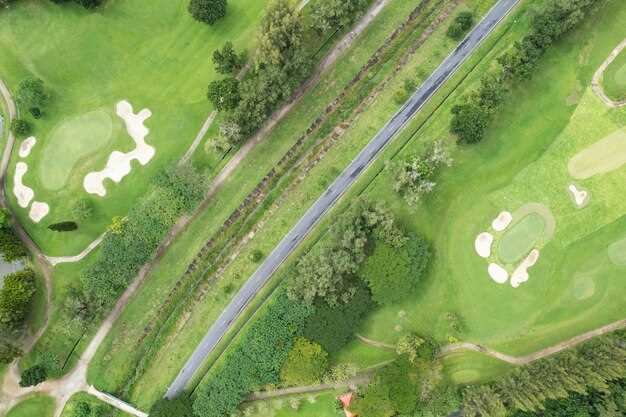
Imagine a world where progress and preservation go hand in hand, where the beauty of nature is cherished and protected, and where every step towards development is taken with utmost consideration for the environment. This is the vision that drives the green initiatives in the captivating Doon Valley, a region known for its breathtaking landscapes and rich biodiversity.
In this era of rapid urbanization and industrialization, it has become imperative to find sustainable solutions that minimize the negative impact on our planet. The Doon Valley, nestled amidst the majestic Himalayas, has emerged as a shining example of how eco-friendly practices can be seamlessly integrated into plot development, ensuring a harmonious coexistence between humans and nature.
At the heart of these green initiatives lies a deep-rooted commitment to preserving the ecological balance and promoting responsible land use. Through innovative approaches and forward-thinking strategies, the Doon Valley has become a beacon of hope for sustainable development, inspiring other regions to follow suit.
One of the key principles guiding the sustainable development in the Doon Valley is the concept of conservation and restoration. By prioritizing the preservation of natural resources and the restoration of degraded areas, the valley has managed to maintain its pristine beauty while accommodating the needs of a growing population. This approach not only safeguards the unique flora and fauna of the region but also ensures the well-being and quality of life for its residents.
The Importance of Eco-Friendly Practices in Doon Valley
Recognizing the significance of environmentally conscious actions in the region of Doon Valley is crucial for the preservation and sustainable development of the area. By embracing eco-friendly practices, we can ensure the long-term well-being of the ecosystem and its inhabitants, while also promoting a harmonious coexistence between human activities and nature.
Implementing eco-friendly practices in Doon Valley is essential for maintaining the delicate balance of the local environment. By reducing our ecological footprint and embracing sustainable methods, we can minimize the negative impact on the natural resources and biodiversity of the region. This includes adopting renewable energy sources, promoting waste reduction and recycling, and implementing responsible land management strategies.
Furthermore, eco-friendly practices in Doon Valley contribute to the overall health and well-being of the local community. By prioritizing sustainable development, we can create a cleaner and healthier living environment, reducing pollution and improving air and water quality. This not only benefits the residents of the valley but also attracts visitors who appreciate and value eco-conscious destinations.
Embracing eco-friendly practices also presents economic opportunities for the region. By investing in green initiatives, Doon Valley can attract environmentally conscious businesses and tourists, boosting the local economy and creating job opportunities. Additionally, sustainable practices can lead to cost savings in the long run, as energy-efficient technologies and resource management strategies reduce expenses and increase efficiency.
| Benefits of Eco-Friendly Practices in Doon Valley: |
|---|
| Preservation of the local ecosystem and biodiversity |
| Improved air and water quality |
| Healthier living environment for residents |
| Attracting environmentally conscious businesses and tourists |
| Cost savings through energy-efficient technologies |
In conclusion, prioritizing eco-friendly practices in Doon Valley is of utmost importance for the sustainable development and preservation of the region. By embracing these practices, we can protect the environment, enhance the well-being of the local community, and create economic opportunities. It is our responsibility to ensure a greener and more sustainable future for Doon Valley and its inhabitants.
Green Initiatives for Sustainable Land Use in Doon Valley
In the pursuit of a more environmentally conscious and sustainable future, the Doon Valley region has embraced a range of innovative and forward-thinking green initiatives. These initiatives aim to promote responsible land use practices that minimize environmental impact, preserve natural resources, and foster a harmonious coexistence between human development and the surrounding ecosystem.
Preservation of Biodiversity
One of the key green initiatives in Doon Valley is the preservation of biodiversity. Efforts are being made to protect and restore the rich variety of plant and animal species that call this region home. This includes the establishment of protected areas, such as nature reserves and wildlife sanctuaries, where native flora and fauna can thrive undisturbed. Additionally, sustainable land use practices are being implemented to ensure that development activities do not encroach upon critical habitats or disrupt ecological balance.
Promotion of Sustainable Agriculture
Another important aspect of green initiatives in Doon Valley is the promotion of sustainable agriculture. Traditional farming methods are being combined with modern techniques to minimize the use of harmful chemicals and reduce soil erosion. Farmers are encouraged to adopt organic farming practices, which not only benefit the environment but also produce healthier and more nutritious crops. Furthermore, initiatives are underway to support local farmers and promote the consumption of locally grown, seasonal produce, reducing the carbon footprint associated with long-distance transportation.
- Implementation of agroforestry practices to enhance soil fertility and biodiversity
- Promotion of water-efficient irrigation systems to conserve water resources
- Encouragement of crop rotation and intercropping to improve soil health and reduce pests
- Education and training programs for farmers on sustainable agricultural practices
These green initiatives in Doon Valley are not only beneficial for the environment but also contribute to the overall well-being and resilience of the local communities. By embracing sustainable land use practices, the region is taking a proactive approach towards ensuring a greener and more sustainable future for generations to come.
Sustainable Construction Techniques for Plot Development
In the pursuit of creating environmentally conscious and responsible communities, it is essential to explore sustainable construction techniques for plot development. These techniques focus on minimizing the negative impact on the environment while maximizing the efficient use of resources. By adopting these practices, we can create a harmonious balance between development and preservation, ensuring a greener future for the Doon Valley region.
1. Passive Design Strategies:
Passive design strategies involve utilizing the natural elements and features of the plot to reduce the need for artificial heating, cooling, and lighting. By incorporating proper insulation, orientation, and shading techniques, buildings can optimize energy efficiency and reduce reliance on non-renewable resources.
2. Use of Sustainable Materials:
Choosing sustainable materials for construction is crucial in minimizing the environmental impact. This includes using recycled or reclaimed materials, such as reclaimed wood or recycled concrete, which reduces the demand for new resources and decreases waste generation. Additionally, utilizing locally sourced materials reduces transportation emissions and supports the local economy.
3. Water Conservation Techniques:
Implementing water conservation techniques is vital for sustainable plot development. This involves incorporating rainwater harvesting systems, greywater recycling, and efficient irrigation methods. By reducing water consumption and utilizing alternative water sources, we can preserve this valuable resource and minimize the strain on local water supplies.
4. Green Roof and Vertical Gardens:
Integrating green roofs and vertical gardens into plot development not only enhances the aesthetic appeal but also provides numerous environmental benefits. These features help mitigate the urban heat island effect, improve air quality, and promote biodiversity. Additionally, they contribute to energy efficiency by providing natural insulation and reducing the need for artificial cooling.
5. Renewable Energy Integration:
Incorporating renewable energy sources, such as solar panels or wind turbines, into plot development can significantly reduce reliance on fossil fuels. By generating clean and sustainable energy, these systems contribute to a greener and more self-sufficient community. Additionally, implementing energy-efficient technologies and practices further enhances the overall sustainability of the construction.
By embracing sustainable construction techniques for plot development, we can create a future where environmental preservation and urban development coexist harmoniously. These practices not only benefit the immediate community but also contribute to the larger goal of achieving a more sustainable and eco-friendly world.
Promoting Biodiversity and Conservation in Doon Valley
Enhancing the variety of life and safeguarding the natural environment are key objectives in the preservation efforts of Doon Valley. This section delves into the initiatives undertaken to foster a thriving ecosystem and protect the region’s rich biodiversity.
Preserving Native Species
One of the primary focuses of biodiversity promotion in Doon Valley is the preservation of native species. By prioritizing the conservation of indigenous plants and animals, the region aims to maintain the delicate balance of its ecosystem. Efforts are made to protect and restore habitats that support the growth and reproduction of these native species, ensuring their long-term survival.
Creating Wildlife Corridors
Another crucial aspect of biodiversity promotion is the establishment of wildlife corridors in Doon Valley. These corridors serve as interconnected pathways that enable the movement of various animal species across fragmented landscapes. By creating these corridors, the region aims to mitigate the negative impacts of habitat fragmentation and facilitate gene flow, allowing for the preservation of genetic diversity and the overall health of the ecosystem.
Through these initiatives and more, Doon Valley strives to promote biodiversity and conservation, recognizing the importance of maintaining a harmonious relationship between humans and nature. By protecting native species and creating wildlife corridors, the region aims to ensure the long-term sustainability and ecological balance of this unique and precious ecosystem.
The Role of Community Engagement in Sustainable Plot Development

Community engagement plays a vital role in the creation and maintenance of sustainable plot development. By actively involving the local community in the decision-making process and encouraging their participation, a sense of ownership and responsibility is fostered, leading to a more successful and long-lasting eco-friendly development.
When community members are engaged in sustainable plot development, they become active participants in shaping their environment. Their unique perspectives, knowledge, and experiences contribute to the creation of innovative and effective solutions that address the specific needs and challenges of the community.
Engaging the community also helps to build trust and strengthen relationships between developers and residents. By involving community members from the early stages of planning, developers can gain valuable insights into the local context and ensure that the development aligns with the community’s values and aspirations.
Furthermore, community engagement fosters a sense of collective responsibility for the sustainable management of the plot. When individuals feel a sense of ownership and connection to their surroundings, they are more likely to adopt eco-friendly practices and actively participate in the maintenance and preservation of the development.
Effective community engagement strategies include open forums, workshops, and consultations where community members can voice their opinions and contribute to the decision-making process. Additionally, educational programs and awareness campaigns can empower individuals with the knowledge and skills necessary to actively participate in sustainable plot development.
In conclusion, community engagement is a crucial component of sustainable plot development. By involving the local community, developers can tap into their collective wisdom and foster a sense of ownership, resulting in a more successful and environmentally conscious development that meets the needs and aspirations of the community.



